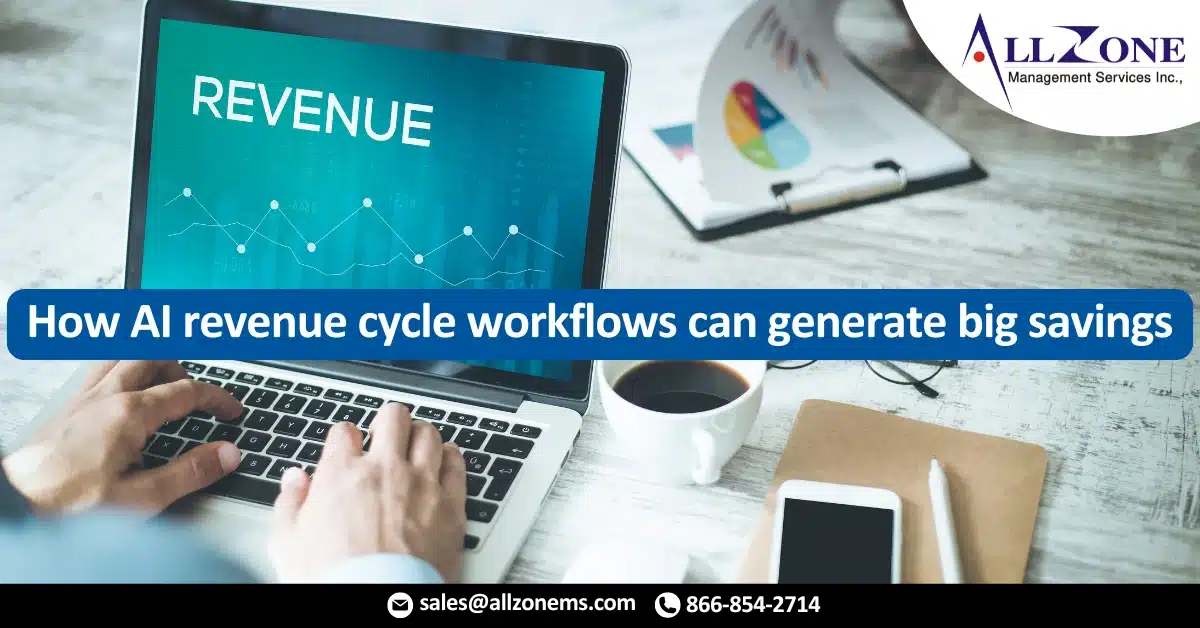From reducing time in the operating room to eliminating hours physicians spend on paperwork , artificial intelligence innovations have allowed hospitals to boost productivity.
Modern hospital executives face a number of financial challenges, as an increasing portion of Americans are going without insurance or enrolling in high deductible health plans. Under these circumstances, patients are financially responsible for a larger percentage of their care and many are finding it difficult to pay. Around 61 percent of Americans cannot afford a $1,000 emergency bill, according to results from Bankrate’s Financial Security Index survey published in January.
As patients struggle to pay for a larger portion of their healthcare, providers are facing declining reimbursements from public payers. As the financial burdens continue to mount, executives are getting more creative, innovative and strategic when working to generate revenue.
During an Aug. 23 webinar presented by Becker’s Hospital Review and sponsored by Ontario Systems, Shawn Yates, director of product management at Ontario Systems, and Mike Duke, principal for Baker Tilly’s healthcare consulting group, detailed the benefits to incorporating AI into an organization’s revenue cycle processes.
Do more with less — AI in the revenue cycle:
Instead of requiring employees to review every account to determine the action needed to resolve an account, the two speakers explained how exception-based workflows, using AI functionalities for certain aspects, can automate many of these processes, which dramatically increases effectiveness. Exception-based workflows move accounts through automated, computerized processes so manual resources are only used when necessary to resolve a claim.
Prior to the implementation of an exception-based workflow, an organization must establish and codify rules for operational consistency. After codes are developed, personnel will only be notified of the need to take necessary actions when the automation detects an “exception,” such as a denial. The system’s ability to correctly route and track progress, ensures employees’ time is spent on valuable tasks. Organizations will in turn see improvements to annual net revenue and reductions in employee costs, according to Mr. Duke.
The starting point is setting up an exception-based workflow process. Then look at your key functions and find ways to automate as many as possible. Utilizing payer data to determine the right time to call is one area. This will ensure you do not call too early, wasting valuable manual resources. You should also look at ways to automate checking the status of a claim. Through AI tools you can check the status on the payer’s website, moving accounts to the right place for a resolution action based upon the status received without manual intervention.
When you do have to call a payer, use AI to drive concurrent calling and reduce the amount of time your rep is waiting on the payer. Being able to navigate the IVR and reducing hold times for your manual resource will greatly improve productivity. When you connect to the payer, make sure your software has the best, highest value accounts there to review. These should be available in tabs so your rep can easily go through as many as possible with the payer.
“The key to an exception-based workflow is to integrate AI tools that can automate as many processes as possible, moving accounts to that resolution action and maximizing your manual resources,” Mr. Yates said.
A workflow personally designed for you:
Mr. Duke reviewed a case study where exception-based workflows were introduced into the client’s revenue cycle. Mr. Duke and his team analyzed the provider’s key revenue cycle data points and conducted interviews and assessments of key personnel. The initial review identified significant manual workaround activities in revenue cycle processes unknown to management. Additionally, the provider was relying on outdated systems to track productivity and route work assignments.
By introducing changes in their processes surrounding exception-based workflows with AI processes, the provider identified improvements in several areas: annual net patient revenue, decreased denials leading to reduced avoidable write-offs and cost reductions in several areas. All total, these improvements were projected to save the provider around $24 million to $26.9 million.
4 steps to implementing a successful exception-based workflow process with AI processes
- Standardize revenue cycle technology workflow, reporting, policies and procedures.
- Implement advanced, exception-driven, revenue cycle workflow tools to support and automate functions.
- Standardize a platform for enterprise-wide revenue cycle reporting and analytics.
- Redesign central business office revenue cycle processes by reducing overlap in job functions.
“Maintain your organization’s intellectual property,” Mr. Duke said. “It allows you to implement your best practices. In healthcare, organizations strive to compare their results with one another. That is the wrong way to look at it. When you use exception-based workflow tools, you can build what’s best for you locally based on skill sets and payers you have to interact with on a daily basis and put in place the necessary rules.”
For more information: CLICK HERE

